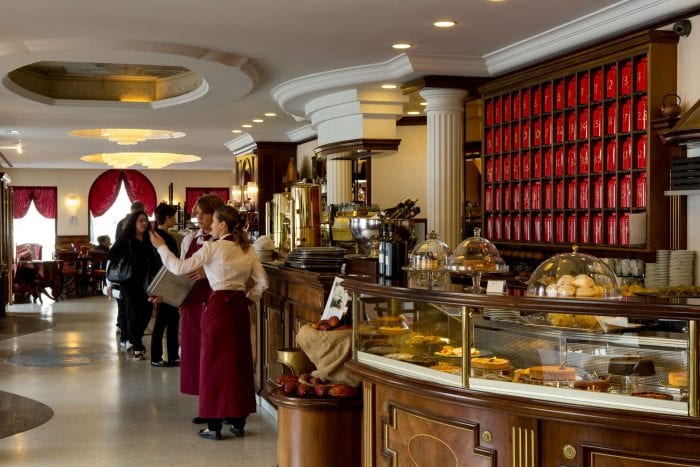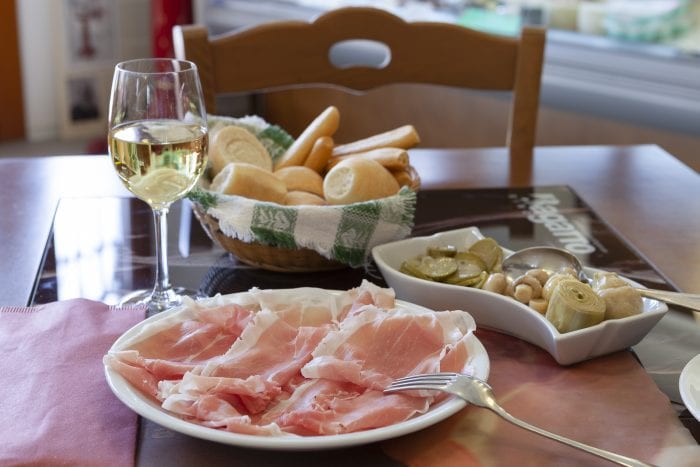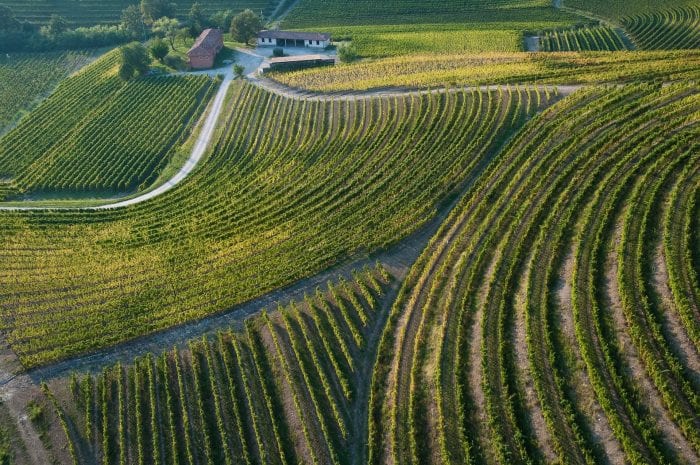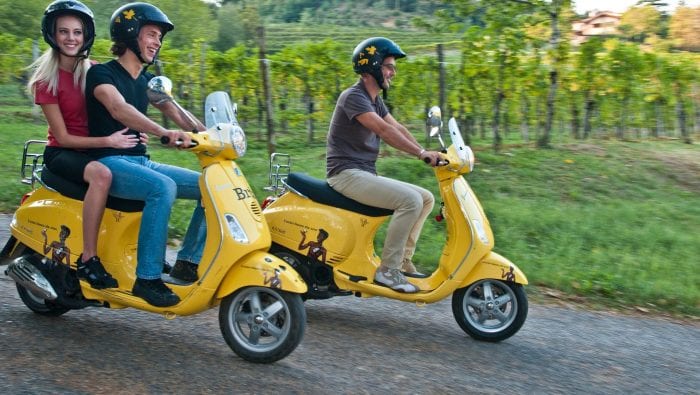Where is Friuli Venezia Giulia?
You could be forgiven for not being able to immediately identify the Italian region of Friuli Venezia Giulia on a map, although you’re likely to have heard of Trieste – the region’s capital city. Tucked away in Italy’s northeast, bordering Slovenia and Austria, Friuli Venezia Giulia boasts spectacular mountain sceneries with over 120km of ski slopes, and 130km of curved coastline lapped by the Adriatic Sea. It’s home to an impressive five UNESCO World Heritage Sites and equally outstanding locally produced wine and food including the famous prosciutto of San Daniele.
Where better for a Wine Tourism Conference

Photo credit: Massimo Crivellari, Caffè degli Specchi
With its long-standing tradition of viticulture, Friuli Venezia Giulia was the ideal destination to host the International Wine Tourism Conference (IWINETC) in October. However, Covid-19 restrictions meant this 5-day event was held online and 300 wine tourism professionals and tourist board representatives, from 25 different countries instead congregated virtually.
The conference programme included seminars on responsible and sustainable wine tourism, digital innovations, and the increasing popularity of staycations. Jonathan Gomez Punzon of the United Nations World Tourism Organization spoke of post Covid-19 restart strategies and opportunities, and there was much talk of how we need to adapt in order to survive these challenging times. Whilst it was not quite the same as networking in person over a glass of the region’s finest Collio Bianco and a platter of prosciutto, there was a wonderful sense of community.
Friuli-Venezia Giulia: What to taste

Photo credit: Fabrice Gallina, Prosciutto di San Daniele
Had the conference gone ahead, as planned, in Friuli Venezia Giulia, we would have had the opportunity to sample first-hand the regions’ plentiful wine and culinary delights. Aside from prosciutto, the area produces Montasio cheese, Sauris smoked ham, strudels and fruit cakes, and high-quality red and white wines, such as Refosco, Terrano, Malvasia, Tocai and Rebula.
Friuli-Venezia Giulia: Not to be missed

Photo credit: Mario Verin, Vigneti a Ruttars
With so much on offer it’s difficult to know where to begin exploring (and tasting), particularly if you have limited holiday time. Sole Da Ros from Pordenone Tourism recommended three not-to-be-missed experiences for foodies and wine lovers visiting the region.
“Don’t leave without visiting Collio. This area of renowned wine estates and small family-run vineyards; elegant castles and historical abbeys produces some of the best white wines in Italy, such as Pinot Grigio and Bianco, Tocai Friulano and Sauvignon. You can easily explore the local wine estates by car, vespa or bike.

Photo credit: Mario Verin, Collio in Vespa
Of course, you must visit San Daniele del Friuli, the homeland of the very best Italian prosciutto crudo (smoked ham), whose production has been handed down from generation to generation. Here you can visit a local ham factory, learn many production secrets and of course, taste the finished product. Don’t just stop at the prosciutto: the local trout is delicious, and you must try frico, a potato and Montasio pie. The old town of San Daniele is also a lovely place to stroll around.
Last but not least, I must mention Trieste. Combining Italian, Austrian, and Slovenian influences, Trieste’s cuisine is unlike the food found anywhere else in Italy. On the menu you can find typical Italian specialties such as gnocchi with smoked ricotta, alongside unusual dishes like brovada (marinated turnips), stinco (braised veal shank), and goulash. Furthermore, Trieste is the European capital of coffee and packed with many historical cafes. However, be careful when ordering as locals have their own coffee vocabulary: an espresso is a nero in Trieste and if you want a cappuccino you will need to ask for a Caffe Latte!”
In the know
Move over Prosecco … Friuli Venezia Giulia produces a sparkling wine – Ribolla Gialla – that is rapidly overtaking Prosecco in the popularity stakes amongst locals who are keen to support their local wine producers. You heard it here first!